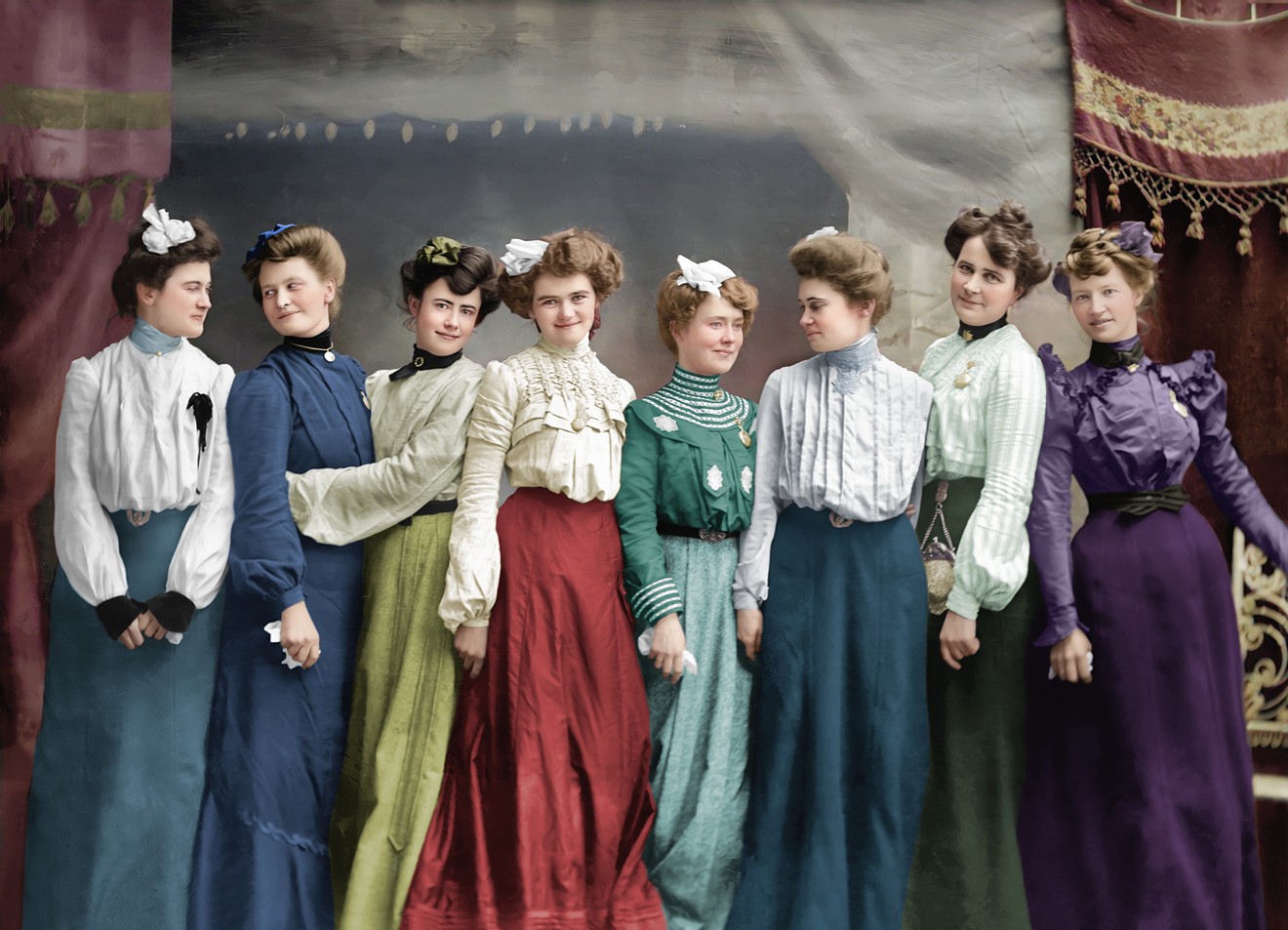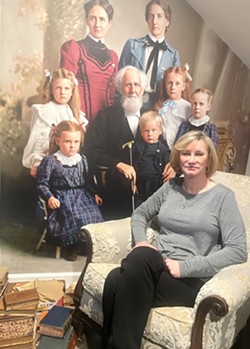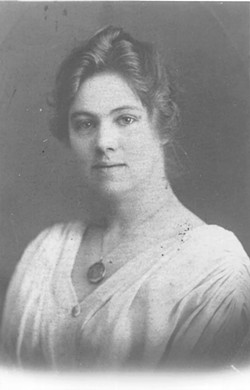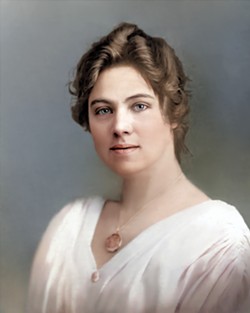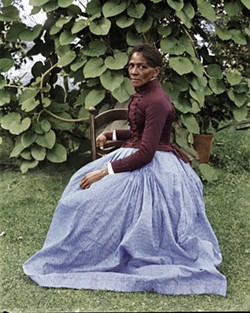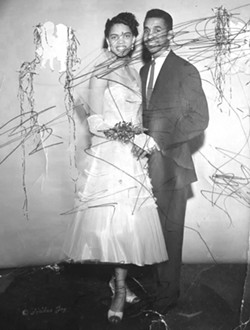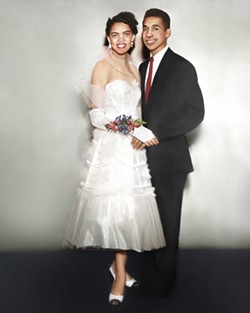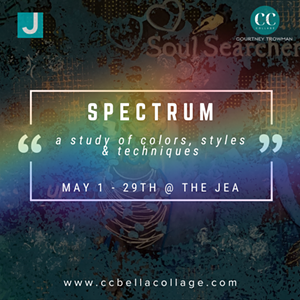Robin Clark has a passion for breathing new life into overlooked and forgotten images from the past, and in an issue dedicated to fresh beginnings, it seemed appropriate to meet with her and find out more about her Savannah-based business, Memory Lane Restoration.
Clark grew up in Pennsylvania about an hour outside of Philadelphia and says that without much direction as a 17-year-old teenager, she took a leap of faith and followed in the footsteps of her older brother by joining the U.S. Army. She was trained in photolithography at the Defense Mapping School (DMS) at Fort Belvoir, VA, and it was this skill that later provided entrée to the Central Intelligence Agency (CIA). “I saw an ad in The Washington Post, and they were looking for someone with film work and layout experience before copy went to press. I used these huge cameras and these enormous trays of developer and fixer (it was the dark ages !) and I worked in the cartography or mapmaking area.”
After a fulfilling 30-year career, Clark retired from “the agency” in 2015 and she and her husband moved to the Landings, having fallen in love with our warm weather, mature vegetation, and beautiful tree canopy. We meet in her upstairs office and studio, set up with two computer screens, two scanners, and massive amounts of storage. (More on the storage in a minute!) She had already done some photo restoration before retiring, but upon moving here she decided to hone her skills and really “make a go of it as a business.”
“I love genealogy!” Clark declares, “I’m the youngest of seven, but I’m the family historian. I was learning Photoshop at the agency [CIA] and it seemed like a perfect fit between the two interests….The sad aspect of this journey was that while I was restoring the photographs in my mother’s photo album in 2006, my house burned down. That’s why I tell people that regardless of whether they use me, digitize your photographs! There are pictures and memories that are only in my head now, and there’s no way to get those back.” Over the years, she has learned to restore photographs that are torn and damaged due to water, excessive sunlight, or mold, “and, of course, the technology has gotten a lot better."
Adobe Photoshop recently came out with Generative Fill, which is an AI software that can recreate and “repair” whole sections of images that are missing. (Obviously that has sinister implications for political images etc. She shows me some examples of “before” and “after” work using Generative Fill, inserting objects and people into photographs that were not originally there, and I all I can think is how little we should trust the authenticity of any image we see in print or online!)
Clark is particularly excited about digitally colorizing photographs, sometimes using tints and dyes, to make ancestors appear more real. In her studio space she has the first wallpaper she made from an 1800’s glass negative of a bearded patriarch, two women, and five children. Knowing nothing about the family, she cleaned up the image, and skillfully and intuitively colorized it according to the ethnic heritage of the area. She gives everyone blue eyes and says, “I could be wrong, but that little girl looks like a redhead! And I wanted the colors of the fabrics to complement each other and complement the background.
And speaking of historical images, her work has led her to have an enormous inventory of glass negatives, tintypes (photographic images on a thin sheet of metal or iron extensively used in the 1860’s and 1870’s), and cabinet cards (thin photographs mounted on a small card and widely used for portraiture after 1870)….the storage spaces I mentioned earlier are filled with plastic bucket after plastic bucket of negatives and images. Buying up auction lots has become her passion: “You think, this is the first time many of these people were ever photographed. It may have been the one and only time.” Her first collection of over 700 negatives by Nathan C. White (1828-1913)) of Gainesville, GA, contains many African American portraits.
This is the second aspect of Clark’s business: in addition to her restoration work for families and clients, she prints unique and interesting vintage photographs. “I started collecting about four years ago because I wanted to be able to sell prints and didn’t want to have to worry about copyright infringement. Now I have over 11,500 glass negatives!” She puts the developed glass negatives on her scanner and, “it is a surprise every time” as she’s never exactly sure what the image will be, or how badly damaged it will be. “It’s like Christmas morning!”
Going down rabbit holes of historical research through such sites as Ancestry.com is fascinating to her and she tells me a story of an 1890's photograph of a NC parade that her followers helped her date, aiding her in determining that the carriage in the parade held President McKinley. (She subsequently sold that image to a museum in North Carolina.) “These pictures resonate with people. It’s nostalgia for a simpler time.”
Clark has built her business primarily through social media (she has over 90,000 Facebook followers) and works with clients from all over the world. All they need to do is email her an image – although, of course, it is preferable for her to work from the original image. “People get invested in the stories of these images, wondering what the subjects’ lives were like. In the early 1900’s you had so many young men who went off to war and never returned, or so many who died in the Spanish flu epidemic. I just got in negatives from the 1920’s in Germany, and you wonder what happened to those families…It’s like a treasure hunt looking for clues and finding out more information.”
Clark becomes emotional as she tells me about a client who asked her to restore a picture that was in “absolutely horrible condition.” It was the only picture the client had of her son, and it was for his tombstone... “The biggest joy is when people tell me, ‘You brought tears to my eyes…you’ve brought my family member back to life.’ It’s a feeling that fills my heart.”
Find out more about Robin Clark’s work at memorylanepr.com and follow her on Instagram @memory_lane_photo_restoration or on Facebook at memorylanepr.

